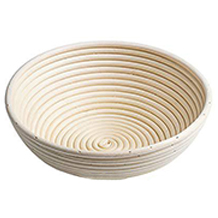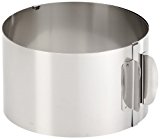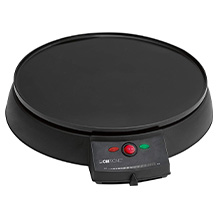Pizza stone purchasing advice: how to choose the right product
- The most important facts in brief
- With the help of a pizza stone, users can conjure up a crispy, delicious pizza at home, just like at the Italian restaurant.
- The stones, which are made entirely of natural materials and can store heat for a long time, require a preheating time.
- When cleaning, the user should avoid water and sharp objects if possible. A ceramic hob scraper is recommended.
The operating principle of the stone oven
At a good Italian restaurant, not only the ingredients for the pizza dough and its toppings are carefully selected. The stone oven, which is a must in any Italian restaurant, also has special properties.
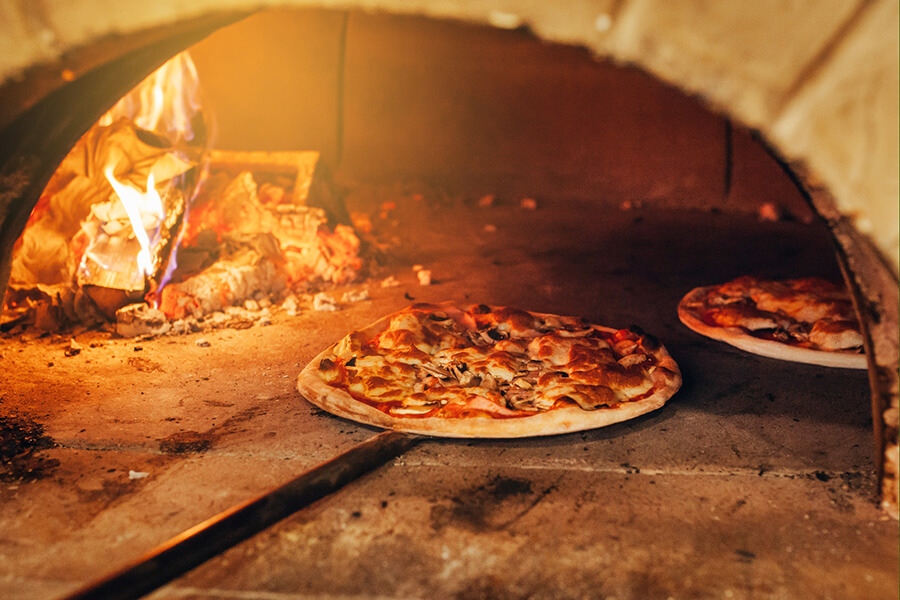
The stone slabs that line the inside of the oven can be made of different materials, such as cordierite, granite, soapstone or fireclay. These retain the heat for many hours, making the pizza incomparably crispy in no time at all, without drying out the ingredients on the dough base.
In principle, the pizza stone in the home kitchen works in exactly the same way as the large, permanently installed pizza oven at the Italian restaurant. The pizza stone absorbs the condensation water under the dough. Furthermore, the direct contact heat cooks the pizza faster. Depending on the thickness of the stone, usually between 15 and 50 millimetres, it is heated in the oven at maximum temperature – almost always 250 degrees Celsius – 25 to 45 minutes before baking. The heat supply is not turned off during the baking process. The top and bottom heat function is always preferable to convection for baking a pizza. The pizza stone goes into the cold oven on the lower or middle rack so that the air can also circulate under it. Therefore, a baking tray is not suitable. Placing it directly on the oven floor is also not recommended – especially as the plate can cause heat to build up there and damage the heating coils.
No more soggy dough bottoms
After the heating time, the pizza stone releases the high temperature slowly and distributed over the entire surface. Now the raw dough, including toppings, is transferred to the stone, most easily with the help of the pizza shovel. The stored heat from the stone is transferred directly to the underside of the dough. This direct heat transfer and the extremely short baking time make the pizza incomparably crispy. The ingredients are protected from burning and loss of flavour.
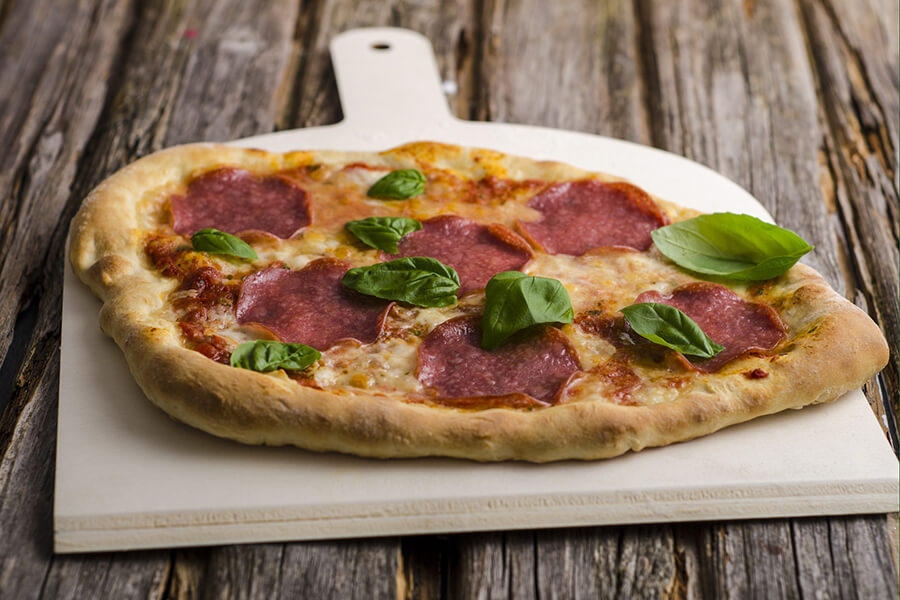
And thanks to the nature of the stone, moisture is also transported away – so it does not accumulate. This creates the bubbles in the dough that are typical of stone-oven pizza. The advantage: The pizza stone gives the pizza a crispy crust during baking and the base does not stick to the stone or the pizza peel. Tip: Dust the pizza peel with flour – then the pizza comes off even more easily. Depending on the thickness of the dough, the pizza is ready within five to ten minutes. Preparing a pizza on a grill or baking tray takes at least twice as long.
What differences does the thickness of the pizza stone make?
Depending on the baking device, pizza stone models of different thicknesses are available. If subsequent heating is not possible during baking, for example because charcoal, stoked fire or embers are used, a thick stone is recommended that gives off heat over a very long period. When using in the oven or on the gas grill, thinner stones between 15 and 30 millimetres are advisable, as thicker models require a longer heating time and the thinner stones can be reheated before the next pizza without spending much time.
There is a great risk of burns when removing the finished pizza. With a pizza pusher or a pizza shovel, the pizzaiolo neither touch the hot oven nor the no less hot disc of dough. A real relief!
For preparation without an oven, we recommend using a kettle grill with a lid. The cover creates additional heat in the cooking chamber, so that the topping of the pizza also becomes nice and crispy. The amateur chef can use either a charcoal or a gas grill for this purpose.
Choosing the shape
Important factors when purchasing a pizza stone are the shape and size. First of all, it is important to check whether the dimensions of the desired stone can be placed in the oven without any problems or whether too large dimensions make this difficult or hinder it. Whether you choose a round or square model is of secondary importance.
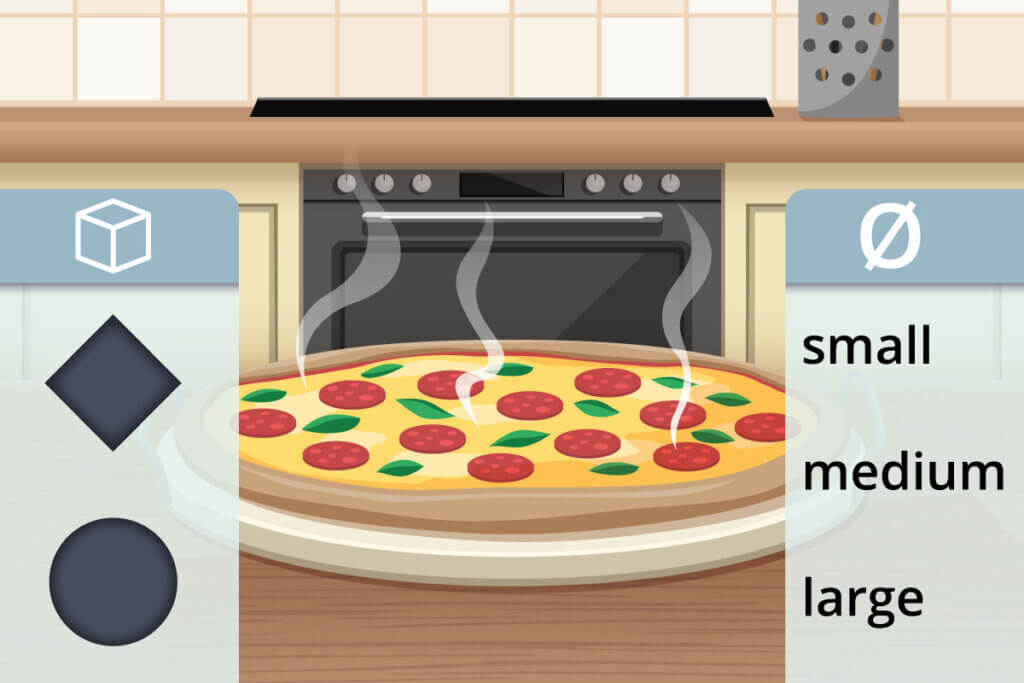
However, for large pizzas, about the size of a tray, sufficient for a family, a square model is more suitable. For preparation on a kettle gas grill, the round variant is to be preferred due to the fit. In most cases, these models have a diameter of 26, 30 or 33 centimetres.
Pro points
- Incomparably crispy pizza base
- Easy to clean
- Low purchase price
- Long shelf life of the material
- Bakes crispy without burning toppings
Drawbacks
- Discolouration can look unsightly
- Preheating time and thus energy costs increase
Which material is best?
The variety of pizza stones is very large. Four different materials dominate the market:
- Soapstone
- Ceramic
- Fireclay or chamotte
- Cordierite
Soapstone: Also suitable for building a stone stove
Soapstone stores heat for a particularly long time and is therefore also used in the construction of stone stoves. The heating time is comparatively long, but still shorter than with cordierite.
Ceramics: comparatively expensive with poorer heat retention
Ceramic is a popular material because it is light and heats up very quickly. However, it does not store heat as well as other materials. This may make reheating necessary.
Fireclay(s): Natural material made of quartz sand
Fireclay is a comparatively inexpensive material and is also used for building fireplaces.
Advantages and characteristics of cordierite variants
The service life of cordierite bricks is generally longer than that of fireclay bricks of normal quality. Due to their materiality, cordierite slabs are also easier to clean: they have no large pores in which ingredients such as flour could get stuck. The production is done completely without chemicals. Only natural raw materials are used, which are fired at around 1,200 degrees Celsius. One could also speak of a kitchen product in organic quality. Due to the way they are manufactured, these pizza stones are absolutely food-safe.
Many of the cordierite stones have a glazing that makes them waterproof. However, some models are only sealed on the top. Therefore, the use of water should also be sparing with these variants. Mechanical cleaning is easier because of the glazed surface. The heating time is comparatively short.
Disadvantages of the cordierite variants
A real fireclay brick is made of clay. Therefore, it has excellent heat storage properties. After heating, this is evenly and slowly released to the pizza base. The open pores in natural products ensure that excess moisture can be dissipated in the form of steam. Most cordierite variants, however, are glazed. This impregnation prevents the residual moisture from evaporating because the pores of the stone are sealed. Therefore, they are not very popular with ambitious pizza bakers. Moreover, the material is rather expensive in comparison.
The colour changes on the surface may be unsightly for some users, but they have no influence on the functionality. The fireclay stone has a different natural colour tone, depending on its origin. This can be yellowish or light grey. The shades make each fireclay brick unique – no two are alike.
Care and cleaning
Colour changes are normal due to the food with which the natural product comes into contact and are virtually impossible to prevent. As the temperature is usually 200 to 250 degrees, this is not a problem: Adhering germs are effectively killed.
Initial cleaning after purchase
Before using the stone for the first time, users should wipe it with a damp but not wet cloth and without detergent. Dirt from the production process and remnants of paper and plastic packaging are thus removed from the stone. The following applies to all variants: Users are always on the safe side if they follow the cleaning and care instructions in the user manual.
After use
As a rule, no dough residue sticks to a sufficiently heated pizza stone, as the pizza base loses liquid due to the even heat and bakes through crispy. Contamination usually occurs when the dough has cracks or holes and the tomato sauce or toppings thus get onto the hot stone or fall off the pizza because the topping is too generous. In this case, the ingredients burn and smoke develops in the oven. The result is greasy and colourless residue on the stone.
But how do users clean the natural products without damaging it? The gentlest way is to clean it with a kitchen scraper, a device that is also used for cleaning ceramic hobs. To do this, hobby bakers first let the stone cool down completely and then remove all the pizza residue. They then clean the surface with a kitchen towel or a damp sponge. In general, users should try to use rather little water.
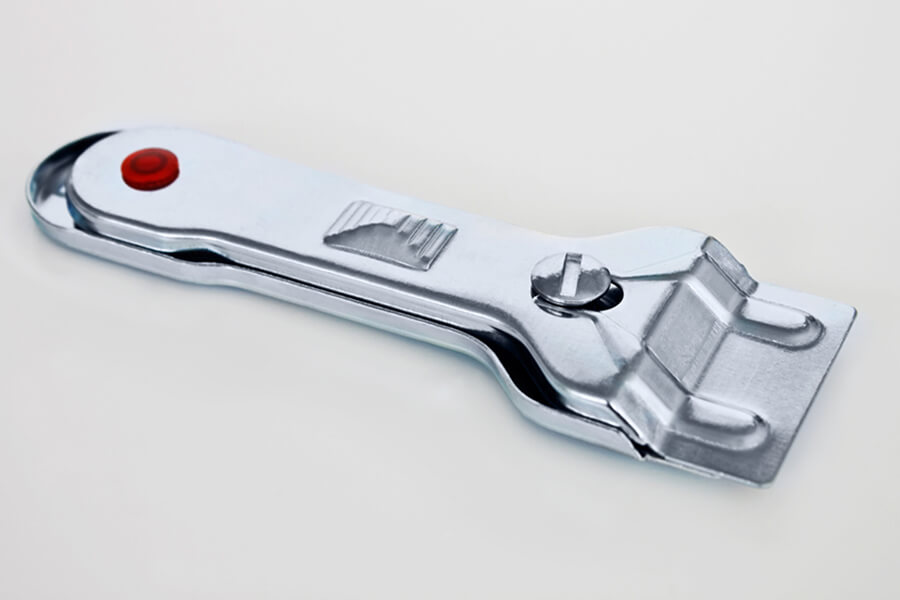
Do not clean the pizza stone when it is hot.
Before cleaning, the stone must first cool down, otherwise it can be damaged. If the hot plate comes into contact with water, this sometimes leads to the formation of cracks. Dishwashing detergents attack the natural product and should therefore not be used at all. An attempt to clean it in the dishwasher would be just as damaging.
When thorough cleaning is absolutely necessary
In general, regular, thorough cleaning is not advisable, as it attacks the surface of the pizza stone. For cleaning, the user should use a steel sponge or emery paper and remove the dirt very carefully with it. cases, as the material is quickly worn away. Stubborn dirt can be removed carefully with a steel sponge.
Another cleaning method that is controversially discussed on the internet is cleaning the stone with a high-pressure cleaner. Here, the user should secure the pizza stone against slipping and then carefully blast it. It is important to ensure that only clear water without cleaning additives is used for high-pressure cleaning. These can – similar to hand washing – attack the material. In addition, it is possible that detergent residues remain in cracks in the stone and transfer to the food during subsequent use.
In any case, users should allow the cleaned pizza stone to dry thoroughly before the next use to avoid chipping damage in the hot oven caused by remaining water. Cleaning in the dishwasher is also out of the question. The hot water and cleaning agents would cause the stone to swell.
Pyrolysis
Pyrolysis is the option available on some ovens to heat the appliance to over 500 degrees for a period of about three hours. During this heating phase, dust and food residues decompose into ash. Afterwards, users clean the appliance by sweeping or wiping it out. Although this process consumes more electricity, it also saves users from having to buy an expensive cleaning agent.
Using the pyrolysis function of the oven
If the oven at home has a pyrolysis function, users can clean their pizza stone easily and effectively in this way. The high temperatures ensure that impurities are simply burnt out. After a longer cooling phase, users sweep the dust residue from the surface or wipe it off using a small amount of water.
Variants against monotony
There are practically no limits to the inventiveness of food preparation. If the desire for pizza should ever subside, the user can also bake another dish on his pizza stone. French, crispy, thin tarte flambée, for example with bacon and onions, also turn out perfectly on this practical kitchen helper! In addition, many delicious bread variations and crispy rolls are possible.
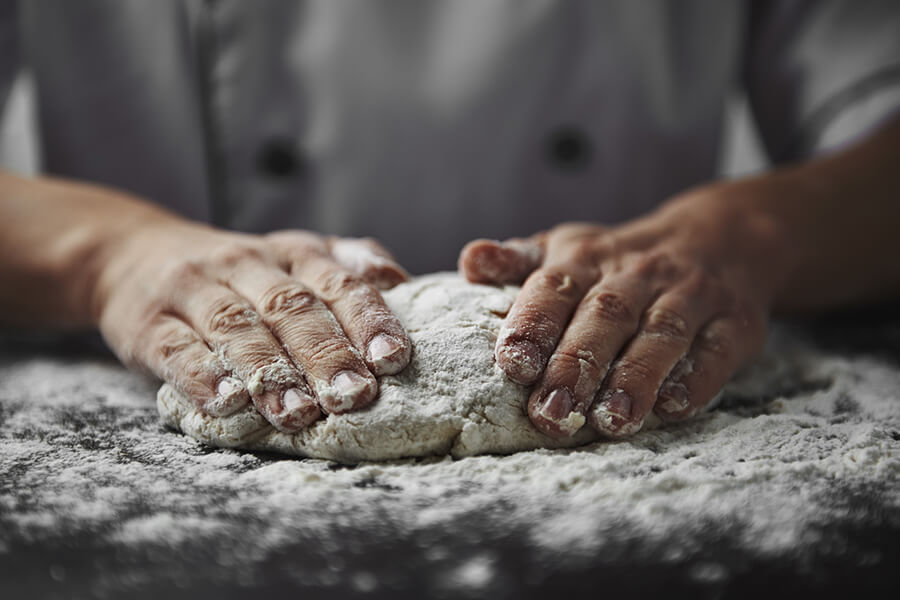
Origin of the pizza
Pizza experienced its rise in southern Italy from the mid-18th century, at the time when tomato was becoming popular there. It was considered a poor man’s food, sold on the street. This original pizza was only drizzled with olive oil and topped with tomato slices and oregano or basil.
But the original form of today’s pizza is much older. The closely related Lingurian focaccia, flatbread-like baked goods, were already widespread in ancient times. Since a very high temperature is required for preparation and this could not be achieved in one’s own four walls, the pizzas were once prepared and then taken to the nearest bakery to be baked until crispy. The craft of the pizzaiolo, the pizza baker with his own stone oven who makes, toppings and bakes the dough himself, did not emerge until later.
In the meantime, pizza has found its place on the European menu. In addition to homemade versions from Italian restaurants or from the kitchen at home, pizzas are nowadays also eaten as ready-made meals. According to the German government’s 2017 nutrition report, the trend towards quick, effortless food preparation is on the rise. No wonder that more and more frozen pizzas are being sold. Ordering pizzas from delivery services over the internet is also very popular, especially among young people.
Pizza recipe
The thinner the pizza dough is rolled out, the better it turns out, but it should not tear or have any holes. The pizza always turns out better on a pizza stone than on a baking tray.
Required ingredients and preparation steps
For the basic dough, pizza makers need only 500 grams of flour, 5 grams of dry yeast, 300 millilitres of water and a teaspoon of salt for four portions.
In the first step, they crumble the yeast into the cold water while stirring. After adding the flour and salt, mix everything with the dough hook of the hand mixer. Now form a dumpling, place it in a bowl, cover it with cling film and leave it to rise at room temperature for one and a half hours. Alternatively, place it in the fridge overnight.
After the rising time, divide the dough into four equal pieces and roll them out on a lightly floured work surface from the inside out to form a thin plate. Then top the dough with the desired ingredients, for example tomato sauce and mozzarella.
Place the pizzas one after the other on a baking tray preheated to 250 degrees Celsius in the oven and put them on a rack in the lower third of the oven for 12 to 15 minutes. They then top the dough pieces with a few leaves of fresh basil if desired and season with salt, pepper and oregano. Some users also like to drizzle a little olive oil over the hot pizza.
And finally, a few interesting facts
- In the USA, 350 pieces of pizza are sold every second
- Pizza Hawaii, the culinary justification for which is a matter of debate, originated in Canada.
- In 2015, every German ate an average of eleven frozen pizzas

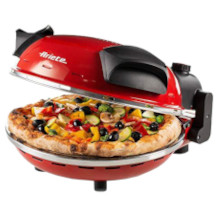
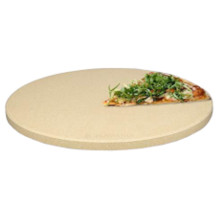
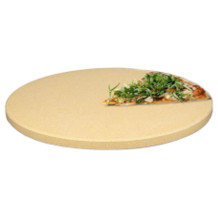
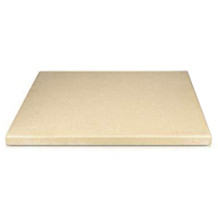
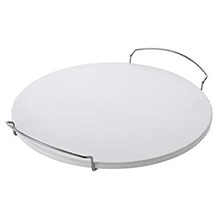
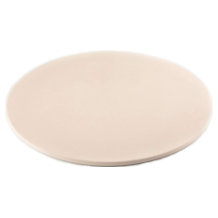
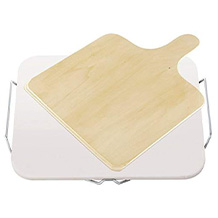
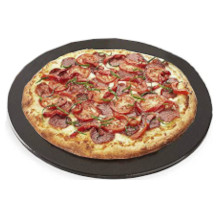
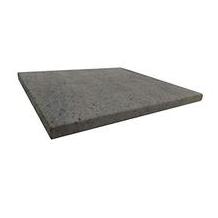

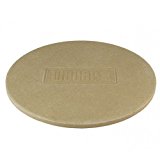
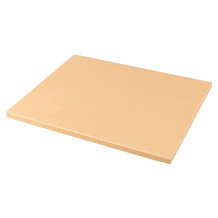

 2,339 reviews
2,339 reviews
